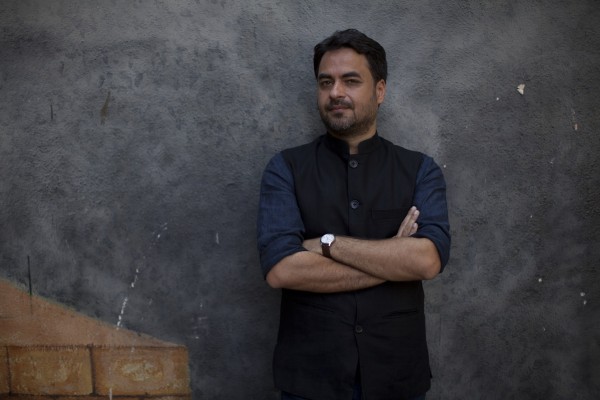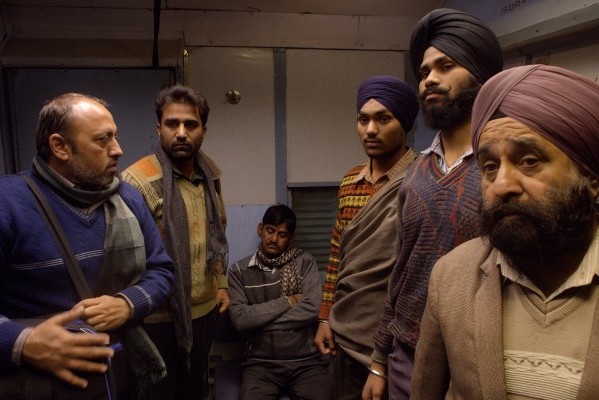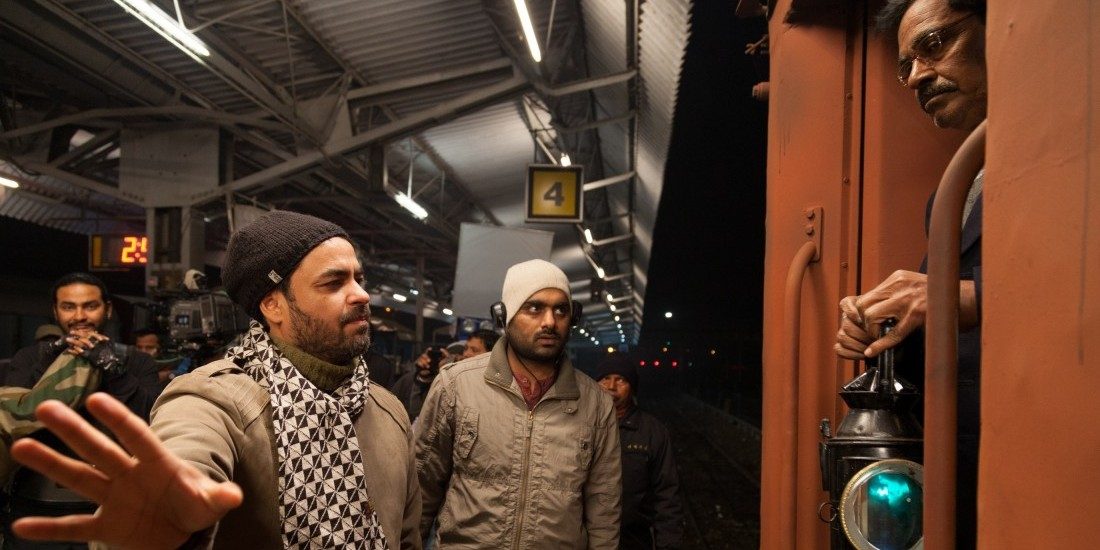It would’ve been easier to be another ‘Hindi’ filmmaker: Gurvinder
Unlike the gloss and glamour in typical Punjabi cinema, his films capture tales from Punjab in the most unique and intriguing manner. Director Gurvinder Singh’s debut film Anhey Ghorey Da Daan (Alms for a Blind Horse) premiered at Venice International Film Festival, bagged three national awards and even won the Golden Peacock award at the International Film Festival of India. With his second film Chauthi Koot that premiered in the Un Certain Regard section at the 68th Cannes Film Festival, won the Best Asian Film Award at the Singapore International Film Festival (SGIFF), Grand Prix at Belgrade Auteur Film Festival, Golden Gateway of India Trophy at MAMI and the National award for Best Punjabi movie; Gurvinder has put Punjab on the global map. Here are excerpts from an exclusive conversation with the award-winning filmmaker.

Director Gurvinder Singh
A lot of stories have been written on the period of insurgency and there are countless personal anecdotes. What was it about these two stories by Waryam Sandhu that made you choose them?
They were situations with an element of suspense and mystery that kept you curious throughout while reading them. They blended with my Hitchcockian sense! Also, they talked of common people, far removed from the political events, who had no stakes in the insurgency. So the situation around had to be evoked and imagined, which is a wonderful challenge for any filmmaker. The fear permeates from unknown quarters. It’s a fait accompli even before the film begins. That makes the characters respond the way they do. So an entire atmosphere is already present and the job is to create it cinematically through rhythm, gestures and reactions to the environment and human actions.
Have the two stories been improvised or used as is for the film?
Improvisation is essential to filmmaking and more so when one is adapting a literary work, as it needs to be translated. The characters and spaces in a book can only be imagined. So how can one make a film as it is? Physical equivalents of people and places need to be found. Part of the film is set in an isolated farmhouse surrounded by fields. Now there are thousands of such farmhouses in Punjab. Which one do you choose? The improvisation starts from casting the space. Filmmakers give so much emphasis on casting actors, but forget that the space exists prior to the character. Spaces are also characters. As are objects and environment.
The right space affords a particular kind of movement that I am looking for. If I can’t move the camera freely, I find it restricting. And movement is cinema! Movement of both the camera and the people and objects like vehicles (cycle rickshaws, buses, trucks, tractors, train), which have been an essential character in my films. Their presence, both as sounds and moving and stationary objects, is so central to our contemporary experience. All these things aid in the improvisation. As does the choice of actors. The physical attributes, the voice quality and whether the person is a professional actor or not changes the tonality of a character. Cinema is not descriptive, which the written word can be. The literary text takes a backstage once physical realities kick in.
READ: A STORY IS FOR EVERYONE BUT WE HAVE TO FIND A MARKET FOR IT
So when you are shooting the film, do the scenes remain same as they are written in the script?
The script is just a blueprint to start and manage the shoot. The team needs to know what we are shooting on a particular day. I see script as a management necessity: to raise funds and manage the shoot. In a documentary it’s not even that. When the time comes to shoot, I re-imagine and rewrite the scenes as possible shots: how and what the camera will see, how the actors will move and what will they say if they have to speak something. Unexpected things happen while taking a shot, things which cannot be visualised in a script. The reality of sights and sounds needs to be respected. That which is not in the script will enter the frame. Now it’s up to the filmmaker about how tolerant he or she is of this unexpected or random. I look forward to them.
I keep retaking a shot if this unexpected does not happen. If everything is happening as planned, I am not satisfied. It could be as simple as you expected it to be sunny and it’s raining. Or you expected the actor to emote in a certain way and she is doing something totally different. It’s important to observe this and think: I didn’t imagine that she would emote or gesture like this, but this is her reality and this is her reaction to a particular situation. One should respect that if it’s not completely ruining your idea of a scene. I sometimes feel that I’m less of a director and more of an observer. But one has to have a sense of the whole while taking every shot. The entire film has to flash before your eyes and then imagine the shot being taken in the context of the whole film. That provides the answer.

A still from Chauthi Koot
You must have been quite young in the early 80s when ‘Operation Blue Star’ took place. Are there any personal experiences that you witnessed and which became part of the film?
The film is set in Punjab in the 1980s in the region around Amritsar. I have never lived in Punjab, but the memory of that period is very vivid as I’d read in the newspapers or witnessed in Delhi during the massacre of Sikhs after the assassination of Indira Gandhi in 1984. For the first time religious identity hit me and so did the fact that people could discriminate and form such reactionary opinions on the basis of one’s community. And even kill for their assumed associations and identities. But one slowly learns that it’s all a design of the political class as an instrument of gaining power, be it conflict between communities or nations. We researched a lot and that informed a lot of additions to the script, not any personal experiences.
Though you are a Punjabi, you’ve never lived in Punjab. Yet you still explore different tales related to the land. How do you manage that and what makes you stay connected to your Punjabi roots?
Thanks to my grandparents who gave me the language and formed interest in where we came from, the forbidden land: West Punjab, which is now in Pakistan. All those stories of massacres and escapes in 1947. They had migrated to Amritsar before the partition but lived in a Muslim mohalla (locality). Their house was burnt by mobs since it belonged to a Muslim family. My grandmother escaped clutching her two kids, including my father, in her arms and jumping over terraces. She took shelter in the Golden Temple. My grandfather was away on a business trip to Rawalpindi and got stuck there because of the riots. He returned safely to Amritsar only to find his house burnt and wife and children missing. Imagine what all they had to go through. History always repeats itself. But above all it’s because of the language that I’m making films in Punjab. There was no cinema worth speaking of. It would have been easier to be another ‘Hindi’ filmmaker!
READ: HONEST STORYTELLING IS WHAT MATTERS TO ME
You normally cast non-actors in your films. Why did you choose to go with actors for Chauthi Koot? Was the approach similar to Anhey Ghode Da Daan?
Every film is bound to have some change. I am feeling more relaxed now and letting the actors open up, be they professional or non-professional actors. I don’t understand what you mean by ‘non-actors’. Everybody is a ‘non-actor’ for me, even if they have done a hundred films! Their professional experience is immaterial to me. But I understand that there are some things which are easier for a trained or experienced actor to do, that’s why the main roles in both the films went to professional actors: Samuel John and Suvinder Vikky. And along with them is a mixed cast of untrained and trained actors. Even in choosing a trained actor, his or her being has to resonate with that of the character. The actor becomes the character for me. I ask them to be themselves. There is no question of them becoming someone else in front of the camera. And to answer your earlier question about script and departures, significant departures start taking place once I accept my actor as the character. I let them change the dialogues and speak in their conversational style. Nothing in the script is sacred.

Punjabi actor Surinder Vikky who plays the main role in Chauthi Koot
What role does silence play in showing an era that was anything but silent as there was a lot of violence?
Violence brings with it a lot of silence though it’s perception could be that of cacophony. It can numb people. Audiences, specially in Punjab, are used to talking head films and that too of a very boisterous variety, hence they might think there is no expression in silence. There can be no sound without silence. Silence creates the sound. And if you see Chauthi Koot there are a range of sounds and expressions, sometimes very quiet and disturbing, anticipating the coming of a storm. And then silence again post violence. The anticipation of violence and its aftermath are both marked by silence and introspection.
So how would you describe the importance of sound in your films as that too has a strong role to play.
When I visualise a scene, I imagine its sounds first and foremost. Then come the visuals. Sound is also an image, an abstract image that is open to associations, that can invade the screen from outside and create layers of multiple reflections and echoes in a shot. When people talk of films, they only think of it as a visual medium. Even they don’t realise how sound is affecting them and gripping them. Sound made by objects is music for me. You can use these sounds to create music like compositions. The role of the off-screen sound is very important in this. But it does not have to be arbitrary.
How was experience the taking the film to various festivals, especially Cannes?
Cannes is huge with all the aspects of filmmaking on display: the market, the commerce, the media, the glamour, independent films, established auteurs and small budget independent films like mine. It can be intimidating. The media can be scathing. A lot of the business players are there, not for the love of watching films, but for buying and selling. If they feel a film is of no value to them, they walk out midway. But one should not get affected. It’s all a part of the game! Smaller festivals are much warmer and involving. And festivals focusing on the art of films, like Rotterdam, are much more rewarding for a filmmaker with a very serious audience, be it the layman or the critic. But the festival exposure is very important and helps you understand how films are pitched and find their audience. Though after a point it gets very tiring.
READ: FILM FESTIVALS ARE GREAT EXPOSURE FOR NEW COMERS

A still from Chauthi Koot
You were based in Pune and have now shifted to Beed, Himachal Pradesh. Will you continue exploring subjects related to Punjab as now you’ll be even closer home?
I always wanted to live away from the city and the Himalayas are the most beautiful part of India. I live in a small village on the edge of the Dhauladhar forests. The people are very unassuming but proud and clear. They know the value of their surroundings and are integrated with it, as opposed to city people. They grow what they eat and it’s a self-sustaining economy. It’s a breath of fresh air, literally. The sound of thunder and rain falling on the slate roofs is a more enriching experience than any cinema hall can give you. And yes, I will continue to explore Punjab in my films. But now I’m also tempted to explore Himachal, slowly and steadily.
Tell us something about your upcoming works.
I’m working on a couple of scripts, which one gets made is too early to tell. Right now I’m taking a break from feature narratives. I just made a short fiction as part of an international omnibus of ten short films from ten countries, commissioned by a production house in Turkey. And currently I’m working on a video installation for a museum in Switzerland and a film on an Indian artist.




February 23, 2018
[…] It would’ve been easier to be another ‘Hindi’ filmmaker: Gurvinder […]